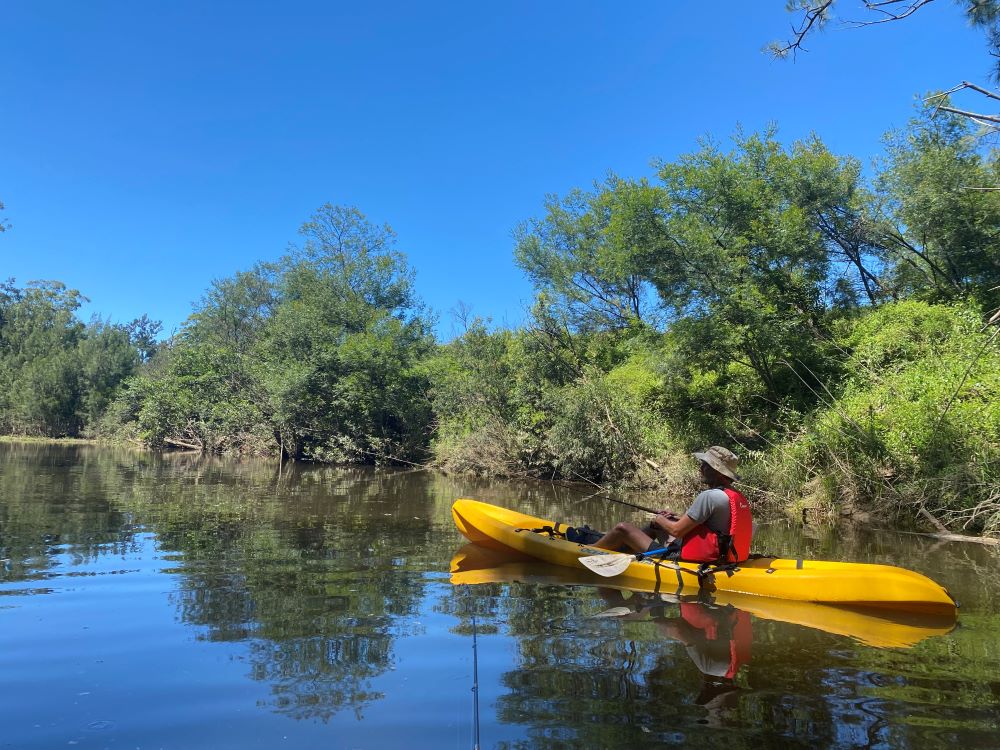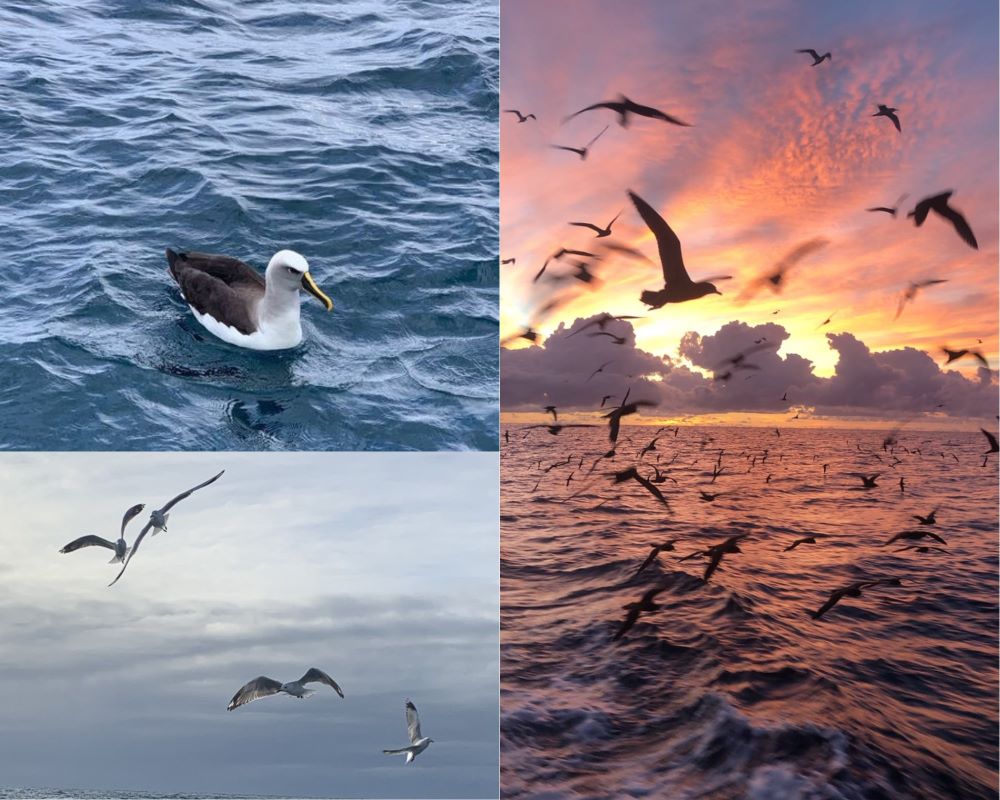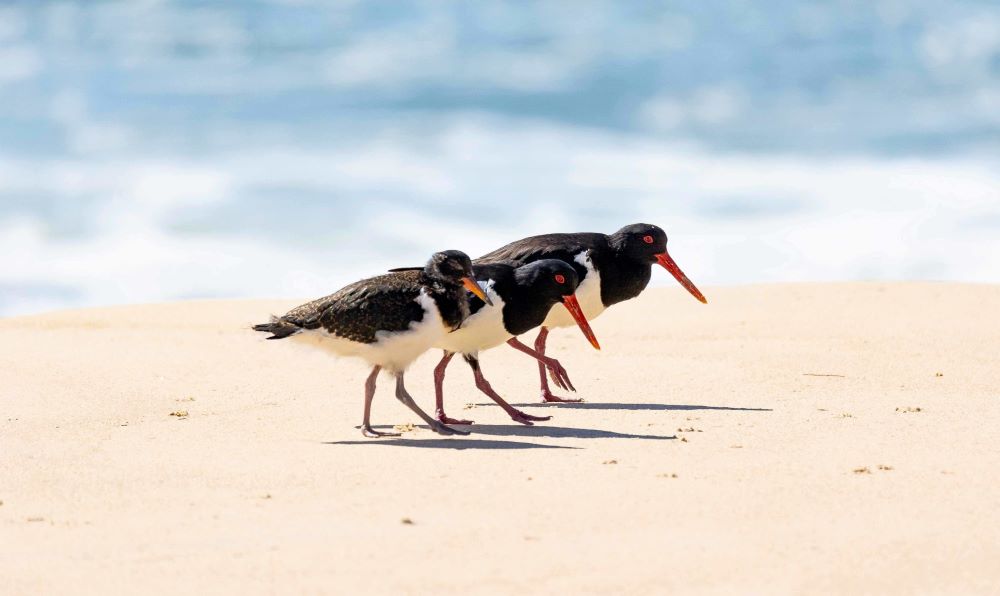
Responsible fishing to reduce the impact on wildlife and the environment
Wildlife such as birds, turtles, platypus and other aquatic animals can be accidentally injured by fishing tackle and unattended fishing gear such as crab traps and nets. Other marine animals may also be negatively impacted when disturbed by people or when vehicles approach.
Here are some quick tips on how to reduce injuries and interactions:
- Always attend your lines and check your crab traps and nets regularly. Reducing set time for any fishing gear reduces the chances of harm to accidentally caught aquatic animals.
- Use environmentally friendly crab traps and nets to reduce your bycatch or adapt your current gear.
- Use of crab traps and nets when fishing towards an estuary’s headwaters has a higher risk of interacting with platypus. Please be extra vigilant, check traps and nets regularly and consider moving gear further downstream.
- Remember opera style yabby traps are not permitted in NSW.
- Minimise interactions with birds - avoid bird feeding and nesting areas and keep your distance so as not to disturb them.
- Be aware that interactions causing disturbance with shorebirds and mammals can have negative impacts on their health, well-being and survival.
- Be familiar with ways to minimise litter and lost fishing gear and dispose of it properly.
Respect your catch – whether they are your target species, a pest species or whether they are scavenger that you try to avoid. All fish you interact with should be treated with respect and released or humanely euthanised using best practice. The community is discouraged from directly targeting, disturbing or interacting with rays adjacent to boat ramps and fish cleaning facilities as they are often important to the local community.
Fishing around seabirds
Seabirds are good indicators of what is below the surface – many fishos know this and use the presence of birds to their advantage to help find fish when out on the water. However, it’s important to limit any interactions with seabirds whilst they are foraging for their food.
Hungry birds are attracted by the sight and smell of food, so it makes sense to avoid actively feeding birds as much as possible and to fish in ways that do not attract birds to your bait. Seabirds are fast and many of them can also dive to depths of six metres or more.
There are a number of actions you can take to minimise interactions:
- Once you have prepared your berley container or cast out your line, sink it deep in the water as fast as you can. Keeping your rod tip low will help prevent birds from becoming entangled in your line.
- If you are cubing your berley there are at least a couple of ways of reducing interactions – you can drop the cubes on the upwind side of the boat so that they disappear under the boat hull and have a chance to sink out of diving range. Another approach is to use a long tube thrust into the water. Cubes dropped into the tube don’t attract the attention of birds until they emerge out of the tube. By the time the birds notice them they should be deep enough to be out of diving range.
- Using artificial baits/ lures can be another successful strategy as these are often less attractive to the birds.
- Making a quick feint or moving your rod in the wrong direction before you drop your line in can also help limit any interactions with feeding birds.
- If nothing else is working, sometimes the only thing left to do is stop fishing for a while or move to a different area.
- You can also make your boat less attractive to seabirds when on the water or at the boat ramp by:
- Keeping it clean.
- Using a bait bucket or bait board with a lid and keeping scraps covered.
- Taking the bait off any unattended rods and ensuring there is no bait/food on the deck – seagulls in particular are notorious for attempting to take baits left unattended in rod holders.
Minimising wildlife disturbance while fishing
As with many other outdoor recreational activities, being out and about in nature can also mean being around native wildlife including shorebirds and marine mammals. This is one of the great things about having such a wonderful and diverse marine environment. However, we all need to remember that our presence and actions can have an impact on their health and wellbeing.
Shorebirds
In NSW, threatened beach-nesting birds, such as the pied oystercatcher, hooded plover and beach stone-curlew return to preferred nesting sites to breed over spring and summer. However, these birds are in danger and need your help. Every year less and less birds are successfully fledging, which has led to a steady decline in beach-nesting bird numbers. These beautiful birds are at risk and collectively our behaviours on the beach can impact them during this sensitive period. Check out a short and informative video.
There are a few simple steps you can take to help keep beach-nesting birds safe:
- Look out for bird nesting signs or roped-off nesting areas on the beach and follow the advice, especially when pumping for bait such as nippers or squirt worms.
- Walk your dogs on dog-friendly beaches only and always keep them on a leash, unless you’re on a designated off-leash beach.
- Drive only on designated beaches and keep below the high-tide mark.
- When you’re near a nesting area, stick to the wet sand and give the birds plenty of space.

Marine Mammals
Whales, dolphins, dugongs, seals and sea lions are protected in NSW. Keep these animals and your vessel safe – follow these rules when watching or approaching them while out fishing.
Keep your distance - marine mammals may unexpectedly lash out if feeling threatened and there is risk of serious injury. Approaching too closely will cause animals to change their natural behaviour resulting in impacts on their health, wellbeing and survival. For your safety and the welfare of marine mammals, you should keep your distance. Intentionally harming, touching, harassing, chasing, trying to restrict their path, or getting too close, is illegal.
Check out the approach distances below. This is the closest you can go to a whale, dolphin, dugong or seal to watch it safely and without disturbing them. Scientists, including veterinarians, helped to develop the Biodiversity Conservation Regulation 2017, which outlines the approach distances for New South Wales. These are based on The Australian National Guidelines for Whale and Dolphin Watching 2017 and also includes seals. For more information see: https://www.environment.nsw.gov.au/topics/animals-and-plants/native-animals/approaching-marine-mammals-in-nsw
Some populations of marine mammals (such as seals in local areas) have responded to the presence of fishers by modifying their behaviour to take advantage of the foraging opportunities provided. If seals or other mammals are present, do what you can to limit your interaction. If they persist in the area, consider moving elsewhere to avoid them. Don’t berley, discard bait or cleaned fish scraps into the water when they are present and do not ever feed the animals as they may form an association with the area and food.
Rescue advice
Tips for handling a hooked or line entangled bird:
- Always assess the situation for your own safety. If in doubt, seek rescue advice from the contacts below.
- Do not immediately cut the line (leaving the bird to trail long lengths of line may lead to further entanglement issues).
- Try to lure the bird towards you or gently reel it in.
- Put some safety or sunglasses on and keep birds well away from your face - seabirds have sharp beaks and may strike at your eyes.
- If possible, ask someone to help you. Wear gloves if you have some handy. Throw a towel or jumper over the bird and gently restrain the head and bill and fold the wings in.
Phone for advice or take the bird to your nearest veterinarian or wildlife centre. If this is not possible, you can attempt to remove the hook or tangled line (if easy to do so and is not causing excessive distress to the bird).
For rescue advice or if you see injured wildlife contact:
Australian Seabird Rescue
North Coast - 02 6686 2852 or 0428 862 852
South Coast - 0431 282 238
WIRES on 1300 094 737 or your local wildlife rescue group for injured native animals
To report all injured or distressed marine mammals, including injured whales, dolphins and seals call National Parks and Wildlife on 13000 PARKS (1300 072 757), or Organisation for the Rescue and Research of Cetaceans in Australia (ORCA) on 02 9415 3333 for the animal to be checked and monitored.

